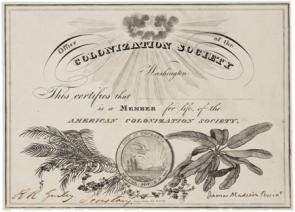After Ferguson, syllabi popped up online to help educators and others teach students about what was occurring. In light of the events in Baltimore, I would like to provide a similar space. A lot of the syllabi I see incoproate news articles and historical perspectives. I have not found ones that have a large "literature" representation. I would like for this syllabus to provide that aspect. There are numerous texts that illuminate what is currently going on in our society. With that in mind, I want this post to be malleable. If you have a suggestion, go to the Baltimore Syllabus on Google Docs and put in your suggestions. I will add them here periodically.
We all know the names Trayvon Martin, Michael Brown, Eric Garner, and Freddie Gray. What we don't know are the millions upon millions people who encounter systematic oppression (I can't call it anything else) that remain nameless. They do not have vigils, news coverage, or receive widespread sympathy (or vitriolic hate) for their experiences; instead, they either go about their lives, end up in jail, or reside in a permanent sleep under ground.
Today, I want to take the time to discuss how we can talk about these things with students. The classroom, we hope, is a safe place for topics to be discussed, but when it comes to issues of race, especially in the current climate, carrying on a conversation with students may become contentious. That conversation, though, needs to occur. If we continue to sweep it under the rug ("It won't happen here." "I'm not a racist.") then nothing will ever get solved. What we need to realize, and get our students to see, is that the things we witness today are nothing new.
With all of this in mind, I just want to take the time to share with you a sample syllabus that was constructed using #baltimoresyllabus. Marcia Chatelain did this with Ferguson using #fergusonsyllabus.
Literature:
Frederick Douglass Narrative of the Life of Frederick Douglass, An American Slave, Written by Himself (1845)
Frederick Douglass The Heroic Slave (1853)
John A Williams The Man Who Cried I Am (1967) Presents the fictionalized King Alfred Plan, a plan developed by the CIA to eliminate people of African descent.
Amiri Baraka Dutchman (1964) and The Slave (1964)
Roland S. Jefferson The School on 103rd Street: A Novel (1976)
Mitchell S. Jackson The Residue Years (2014)
Iceberg Slim Mama Black Widow (1969) Takes place during Chicago Riots that followed the death of Martin Luther King, Jr. As well, the protagonist is an African American homosexual. It corresponds to this story from the Washington Post about a death in the transgender community in Baltimore at the hands of the police.
Ernest J. Gaines A Lesson before Dying (1993)
Essays and Commentary:
Charles Blow "Charles Blow: At Yale, The Police Detained My Son" (2015)
James Baldwin “"My Dungeon Shook — Letter to my Nephew on the One Hundredth Anniversary of Emancipation" (1963)
Chris Rock “Chris Rock Discusses Blacks in Baseball” This is here because of the decision to cancel then reschedule two Baltimore Orioles home games, to have one game played to an empty stadium, and to move three to St. Petersburg, FL. Rock's comments are important as well because of Major League Baseball's push to get more African American youth excited about baseball and in light of Jackie Robinson West Little League team.
Toya Graham, "A Black Mother's Love (Or What Love Looks Like in Public)" and Patrica Hill Collin's Black Feminist Thought provide insight into what Graham does to protect her son.
Toya Graham, "A Black Mother's Love (Or What Love Looks Like in Public)" and Patrica Hill Collin's Black Feminist Thought provide insight into what Graham does to protect her son.
Visual Art:
NAACP’s 1935 art exhibit An Art Commentary on Lynching
From the Ernest J. Gaines Center’s blog: “The exhibition and writing worked to counteract the dominant white lynch narrative by providing a voice, name, face, and life to the victim.”
Films:
Music:
Brother Ali “Only Life I Know”









